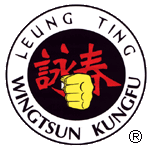Wing Tsun Kung Fu Piaseczno
Book a first time session



Leung Ting
Traditional self defence for modern times

A short History of Wing Tsun.
Wing Tsun dates its creation to the reign of the Kangxi Emperor (1662–1722) in the Qing dynasty. After escaping the destruction of the Fujian Shaolin Monastery by Qing forces, the Abbess Ng Mui fled to the distant Daliang mountains on the border between Yunnan and Sichuan. One day, she came upon a fight between a snake and a crane (or other animal).She took the lessons she learned from observing the fight between the two animals and combined them with her own knowledge of Shaolin kung fu to create a new style. Ng Mui often bought her bean curd at the tofu shop of Yim Yee (嚴二). Yim Yee had a daughter named Yim Wing Chun (嚴詠春) whom a local warlord was trying to force into marriage. Ng Mui taught her new fighting style to Yim Wing Chun, who used it to fend off the warlord once and for all. Yim Wing Chun eventually married a man she loved, Leung Bok-Chao (梁博儔), to whom she taught the fighting techniques that Ng Mui had passed on to her. Husband and wife in turn passed the new style on to others.
Opponents of the Qing Dynasty used the Red Boat Opera Company as a cover to disguise themselves as a troupe of travelling entertainers. Their identities as Chinese opera performers provided a cover for martial arts training; however, the flashy moves of opera style martial arts were not suited to the activities of espionage and assassination, which required specialized skills. Even though assassinations themselves would be carried out using poison or knives, their targets were usually protected by bodyguards who, on discovery of an intruder, would seize the person, call for help, and disable the person to be held for interrogation. Therefore, according to this hypothesis, Wing Tsun was designed to deal with an opponent who seized rather than struck and to silence that opponent immediately. This would explain certain technical aspects of Wing Tsun, such as its emphasis on close-range combat and its many strikes to the throat and diaphragm.
Leung Jan (梁贊) or "Doctor Jan of Fatshan" - was a practitioner of traditional Chinese medicine in the city of Foshan in the 19th century. Leung Jan is said to have learned from Wong Wah-Bo (黃華寶) and Leung Yee-Tai (梁二娣), respectively the male and "female" martial leads of the Red Boat Opera Company, each of whom is said to have been an expert on different aspects of Wing Chun. According to legends from the Yip Man lineage, Leung Yee-Tai was a poler, that is, he used a pole to steer the Red Boat away from rocks and shoals, and was therefore chosen by the legendary Shaolin master Jee Shimhimself to learn the six-and-a-half point pole. Leung Jan's students included his sons Leung Chun (梁春) and Leung Bik (梁壁) as well as "Wooden Man" Wah (木人華) and Chan Wah-Shun (陳華順) nicknamed "Moneychanger Wah" (找錢華), from whom the Yip Man lineage descends.